Parameters are an advanced feature that allows users to build lists of items that can be used to drive or trigger calculations or logic. 'Dynamic' parameters are derived values from data models found in the system while 'static' are hard coded items (text or numbers). Quick Parameters, and specifically Quick Static Parameters, can be created and used directly in Discover.
Static Parameters are hard-coded choices that can be used as prompts for a user. These prompts are used to inject specific values into ANY PART of the query or calculation. Quick static parameters are offered in Discover in multiple venues - namely when using value filters, the N-of-N iterative filters and variable lists.
For more advanced settings and options for parameters, use should use the Formulate tools instead.
Using Quick Static Parameters
Quick Static Parameters can be added from 3 venues in Discover:
Filters
The user can elect to change the threshold values for filters in the filter wizard using static values or a parameter. When using a parameter, they can use an existing one stored ion the content tree, or create a new, internal one-off, parameter.
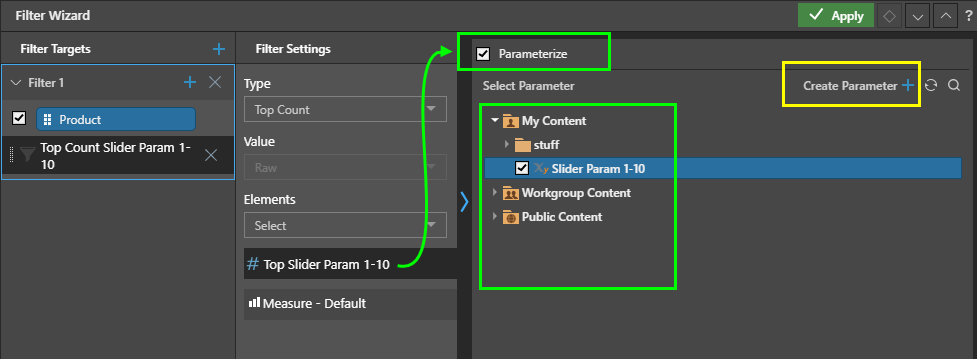
N-of-N
Almost identical to the filters wizard above, parameters can be used or created from inside the N-of-N wizard.

Variable List
Parameters are the central function used in creating variable lists. They are auto-created in Quick Variable Lists, but can also be created with using the full variable list wizard.
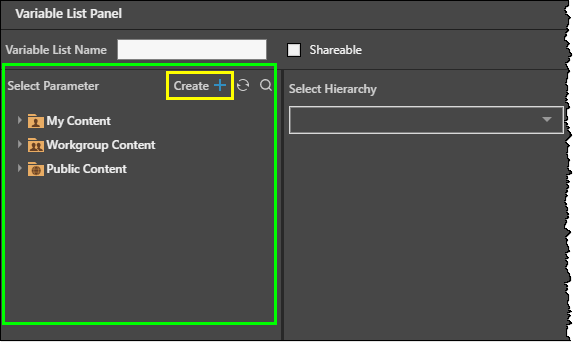
Creating Quick Static Parameters
All parameters (quick or not) contain the same basic settings. First they require a name so it can be identified in the application. Next, the user must choose a parameter "type". Static parameters are presented in 3 types:
- Discrete: hard coded, specific values,
- Continuous: soft coded value ranges, with start and end points
- Free Form: open ended values with optional validation.
Last, the user needs to choose the relevant display type (which will change based on the parameter type)
Discrete Parameters
Discrete parameters are good for prompting users with a defined list of specific values or choices like "5,10,50" or "A, B, C". They can be presented as buttons, drop down lists, lists.
The user can supply the list of discrete choices by simply typing them into the text box with commas separating the values.
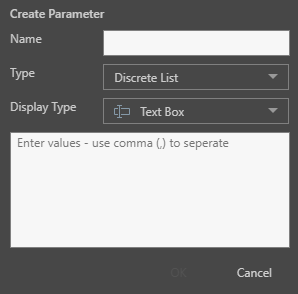
Continuous Parameters
Continuous parameters are good for prompting users with a more fluid list of NUMERICAL values that are driven formulaically using a start and end point; a default value and a standardized 'step' amount. This will allow the user to change the thresholds to a range of values easily. Continuous parameters can be presented as sliders and text boxes.
The user supplies the 2 end points, the step value and the default value.
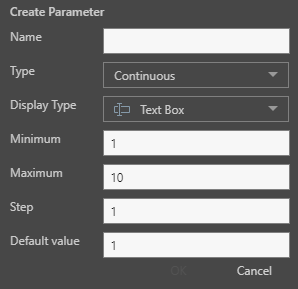
Free-Form Parameters
Free-form parameters are good for allowing the user to freely input any value into the system without any hard coded limitations. The lack of constraints can be very useful for situations where numeric boundaries are hard to standardize; where text inputs can differ wildly; or where the number of options is too excessive to enumerate. Free-form parameters can only be presented as text boxes.
The user supplies a default value and an optional validation switch. The predefined validation can be used to tame the variations in acceptable input (like alphabetical characters, numbers etc). For more advanced options, designers can supply a regular expression ("REGEX") formula to constrain the types of input the free-form parameter can accept.
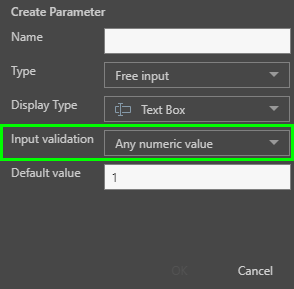
Editing Quick Parameters
Once a quick parameter is created, it cannot be found in the content explorer because it is considered an "internal" parameter. Clicking on the "Internal Parameter" button in the Discover ribbon will expose the list of current parameters.

From here, they can be edited further in Formulate or converted to shared items so they are reused with other items in the system. Once a parameter is made sharable, it can be accessed like all other items in the system from the content explorer an managed accordingly.
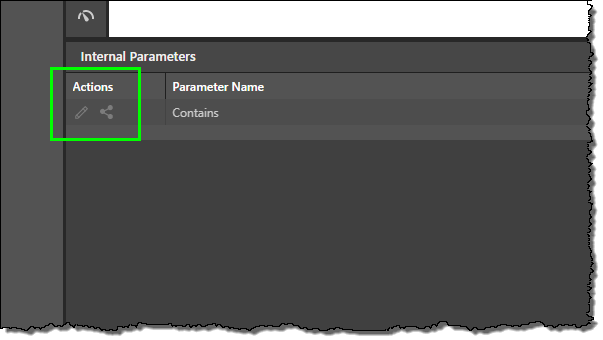
- Click here for more on managing "quick" business logic elements.